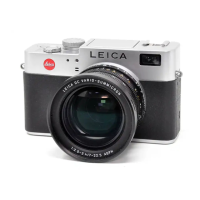Calibrating your display
The single most important thing you may do as a user
is to purchase a monitor calibration device such as the
Eye One Monitor™ from Gretag Macbeth®, or the Moni-
tor Spyder™ from ColorVision®, or the Monaco® Optix™
display calibrator system. We suggest calibrating your
display to 6500k and 1.8 gamma. These settings are
options in all of the mentioned products.
Defi ning your working color space
The second most important factor in your workfl ow is
defi ning your working RGB Color space in all of your
editing applications. Since color management is based
almost entirely on input to output relationships, the
path needs to be free of unnecessary color transforma-
tions.
By default Adobe® Photoshop™ is set to sRGB. Using
these default settings if Adobe® Photoshop™ encoun-
ters an image that has a color profi le other than sRGB
it will honor the embedded profi le. Please check to
see that your Photoshop™ color preferences are set as
pictured below.
If you change your working space in Photoshop™ keep in
mind that all other applications that support ICC profi l-
ing should be set to the same working space for RGB
images so color is not inadvertently transformed. While
larger color spaces are preferable for certain higher
level applications, the fact is that the Digilux 2 camera
was not specifi cally designed to meet the needs of this
sector of the photographic marketplace. The following
screenshot represents the default color settings of
Adobe® Photoshop™ CS. If you do use a larger working
color space on your computer, simply allow Photoshop™
to convert the color from sRGB to your defi ned working
space.
Evaluating your digital images
When evaluating your images always look at tonal
values fi rst. Beginning with the shadows of the image,
look for clues to tonal accuracy. For example:
In the following image, the shadow inside the rear
wheel is pure black. We may assume this is our D Max
point. The values should read 0 to 5 points.
The pavement in the sunlight is a good indication of
neutral exposure values. On a sunny day, expect a
value of 110-to 127 and a neutral color balance (near
equal RGB values).
The white areas with detail should have a value of 240
to 245. This is a critical value to keep track of since
once a white with detail is overexposed there is no way
to get the information back. A raw fi le format image
will be more forgiving, but this is not a good practice.
The spectral highlight on the gas tank will read an
RGB value of 255 255 255 this means that this is the
absolute whitest part of the image. There is no usable
information in this area, and if printed these areas will
have no density.
Overall this JPEG image fi le is technically exposed
properly, but given that the motorcycle was photo-
graphed in direct sunlight, the silver gas tank is slightly
overexposed. While some adjustments could be made
on the computer, the best correction to this problem
would be to reposition the motorcycle to avoid the
direct sunlight.

